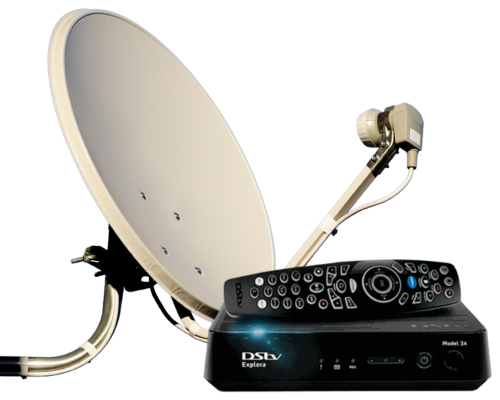The Ultimate Guide to DSTV Setup: Why Correct Setup Is Necessary for Optimum Watching Experience
The installation of a DSTV system is a process that requires precision and experience, as the quality of configuration straight affects the total watching experience. Proper positioning of crucial parts, such as the satellite recipe and the LNB, is essential to make sure optimum signal function and prevent common problems like pixelation.
Value of Proper Installation
Correct installment of DSTV systems is vital for making certain optimal efficiency and integrity. An appropriately established system not just improves the checking out experience however likewise reduces potential technological concerns that might develop during use. The alignment of dish antenna, the top quality of cord connections, and the positioning of decoder units considerably influence signal toughness and high quality.
Insufficient installation can bring about typical issues such as poor image high quality, periodic signal loss, and complete solution interruptions. These issues can be frustrating for customers and may require pricey repair work or reinstallation solutions. Inaccurate installation can nullify warranties and lead to added expenses down the line.
In addition, expert installment guarantees conformity with security criteria and policies, reducing dangers related to electrical mistakes or structural concerns. It also enables the potential of future upgrades, as a tactical installation can fit advancements in innovation seamlessly.
Eventually, spending time and resources into correct DSTV installation is necessary for taking pleasure in uninterrupted accessibility to a vast array of entertainment choices, while additionally protecting the stability of the system for several years to come.
Secret Elements of DSTV Setup
At the heart of a successful DSTV configuration are numerous key elements that function together to supply top notch watching experiences. The first important aspect is the satellite recipe, which captures signals transmitted from satellites orbiting the Earth. Normally, a 60cm or 90cm meal is made use of, relying on the area and signal stamina required.

The decoder, or set-top box, is another crucial component, as it deciphers the signals and promotes access to different channels and attributes. The option of decoder might vary based on the plan selected, influencing the array of networks offered to the visitor.
Lastly, the cabling that links these parts have to be of premium quality to lessen signal loss. Proper installation of these crucial parts ensures a smooth viewing experience, enabling individuals to appreciate a wide range of enjoyment without disturbances.

Dish Antenna Positioning Strategies
Efficient positioning of the satellite dish is vital for optimum signal reception and general performance of the DSTV arrangement. To accomplish this, a number of methods should be used. First, recognize the appropriate azimuth, altitude, and skew angles needed for your place. This info can generally be obtained with DSTV's main installation standards or online resources.
Following, pick an installing location that offers an unhampered view to the anchor satellite. It is necessary to avoid any prospective blockages, such as trees, buildings, or other structures, that might conflict with signal function. HDTEC. When mounting the meal, guarantee it is firmly fastened to endure wind and imp source weather
As soon as the meal is installed, tweak the alignment by using a signal meter. Gradually tilt and turn the meal until the best signal toughness is attained.
Typical Installation Mistakes
Also a small misalignment can lead to weak signals, resulting in pixelation or full signal loss. Additionally, disregarding to protect all connections can lead to recurring service blackouts; loose wires can interrupt signal transmission.
Making use of substandard or inappropriate cables may create signal deterioration, detrimentally influencing your watching experience. Failing to consider the setup atmosphere can result in blockages that hinder signal reception.
Additionally, inaccurately setting up the decoder setups can lead to a discouraging experience. Customers often neglect the requirement to choose the proper satellite or regularity setups, which can stop networks from showing properly. HDTEC. Lastly, some installers ignore the significance of grounding the system, which can result in devices damage during electrical tornados.
Addressing these usual installment blunders is vital for making sure a smooth and pleasurable DSTV seeing experience. Proper attention to information during setup can save time and boost total fulfillment.
Tips for Signal Optimization
To accomplish ideal signal quality for your DSTV setup, it is important to implement numerous crucial methods (HDTEC). Make sure that the satellite dish is correctly straightened with the signal source. Make use of a signal meter throughout installation to make improvements the meal's position, going for the greatest continue reading this feasible signal stamina
Following, think about the sort of wire made use of for connections; high-quality coaxial cords reduce signal loss. Stay clear of long cable television runs, as the longer the range, the higher the possibility for signal deterioration. If longer cables are needed, choose an amplifier to increase the signal.
In addition, make sure that all links are protected and without rust. Weatherproofing these links can further safeguard them from ecological factors that might disrupt signal high quality.
Last but not least, routinely look for blockages that may arise, such as tree branches or structures, which can block the line of sight to the satellite. Preserving a clear course ensures undisturbed solution. By adhering to these ideas, you can substantially boost your viewing experience and lessen disturbances in service top quality.
Final Thought
Precise focus to essential parts, consisting of the satellite dish, LNB, and decoder, considerably boosts signal function and picture top quality. Sticking to recommended installment techniques minimizes the risk of common blunders and maximizes signal efficiency.